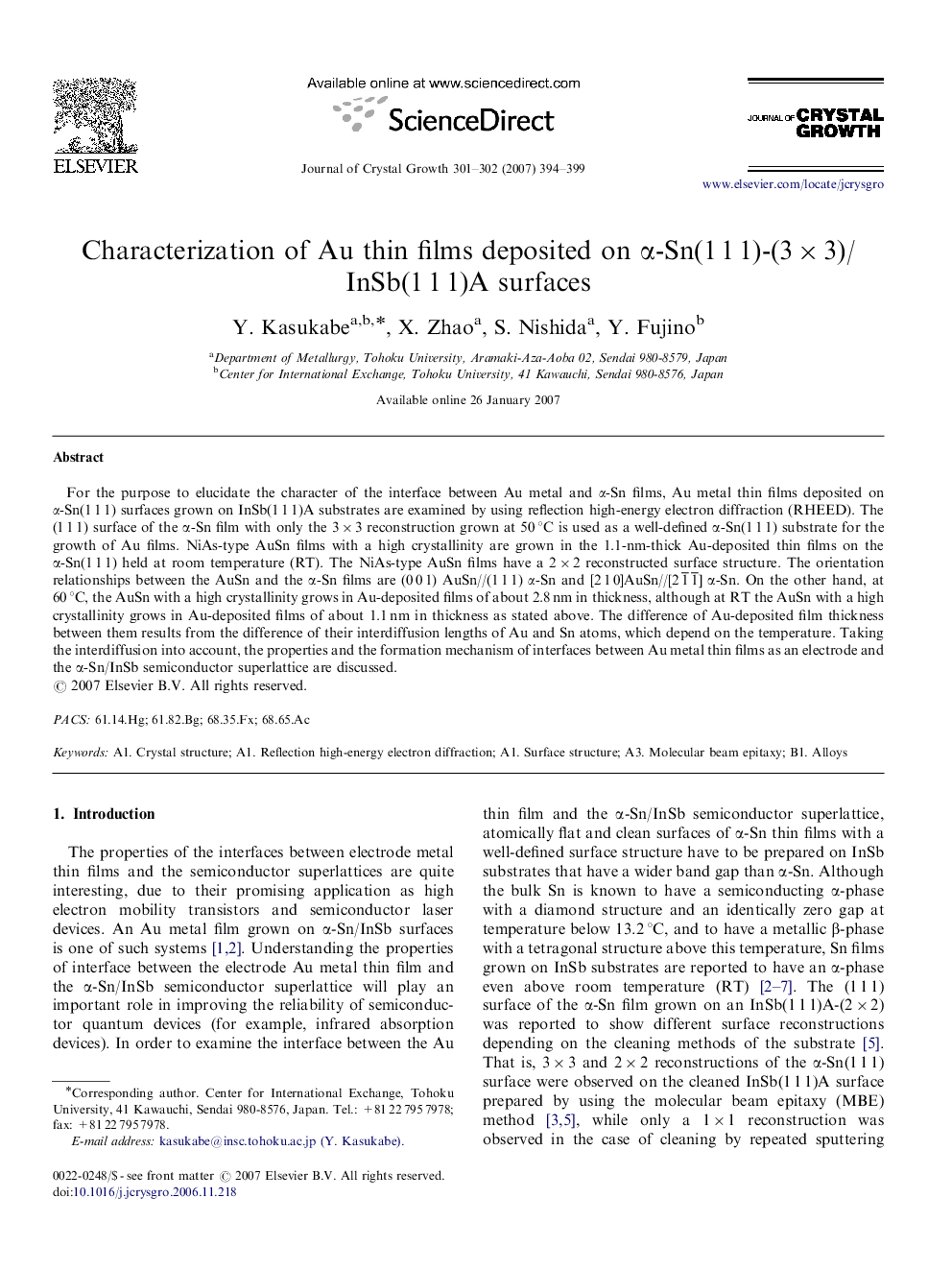| Article ID | Journal | Published Year | Pages | File Type |
|---|---|---|---|---|
| 1795362 | Journal of Crystal Growth | 2007 | 6 Pages |
For the purpose to elucidate the character of the interface between Au metal and α-Sn films, Au metal thin films deposited on α-Sn(1 1 1) surfaces grown on InSb(1 1 1)A substrates are examined by using reflection high-energy electron diffraction (RHEED). The (1 1 1) surface of the α-Sn film with only the 3×3 reconstruction grown at 50 °C is used as a well-defined α-Sn(1 1 1) substrate for the growth of Au films. NiAs-type AuSn films with a high crystallinity are grown in the 1.1-nm-thick Au-deposited thin films on the α-Sn(1 1 1) held at room temperature (RT). The NiAs-type AuSn films have a 2×2 reconstructed surface structure. The orientation relationships between the AuSn and the α-Sn films are (0 0 1) AuSn//(1 1 1) α-Sn and [2 1 0]AuSn//[21¯1¯] α-Sn. On the other hand, at 60 °C, the AuSn with a high crystallinity grows in Au-deposited films of about 2.8 nm in thickness, although at RT the AuSn with a high crystallinity grows in Au-deposited films of about 1.1 nm in thickness as stated above. The difference of Au-deposited film thickness between them results from the difference of their interdiffusion lengths of Au and Sn atoms, which depend on the temperature. Taking the interdiffusion into account, the properties and the formation mechanism of interfaces between Au metal thin films as an electrode and the α-Sn/InSb semiconductor superlattice are discussed.
